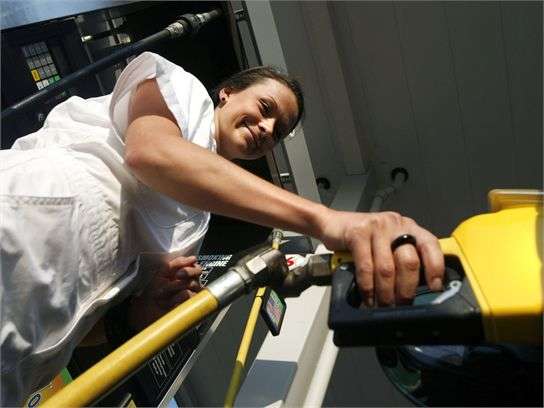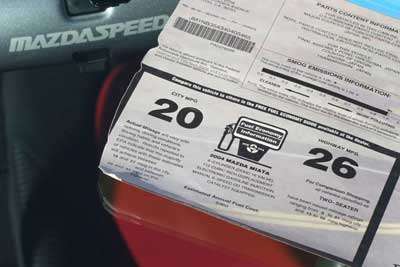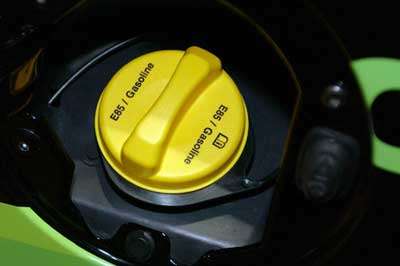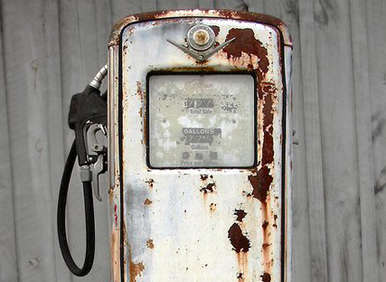Recent Articles
Popular Makes
Body Types
What Is E85?

Simply put, E85 is an abbreviation for a motor vehicle fuel blend consisting of 85 percent ethanol and 15 percent gasoline. The resulting fuel can be used in flexible fuel vehicles, which are specifically designed to run on gasoline, E85, or any mixture of the two.
Ethanol can be produced from any material that contains sugars, these are typically referred to as “biomass”. Most gasoline sold in the U.S. today contains a low-level blend of ethanol to reduce air pollution and oxygenate the fuel supply. This is considered a low-level ethanol blend. E85 is considered a high-level ethanol blend. Studies have estimated that ethanol and other biofuels could replace 30% or more of U.S. gasoline demand by 2030.
In the United States, most ethanol is produced from corn. In other parts of the world ethanol is also produced from sugar cane, potatoes, and manioc. This reliance upon plants typically used as foodstuffs has created some concerns that reliance upon these nutritional staples for fueling motor vehicles could have the effect of driving food prices up. However, many experts assert the majority of the corn kernel is still available for use in other products like animal feed.
E85 Flex Fuel – Pros and Cons
The fact it’s grown from the earth as a crop makes ethanol a renewable fuel. Since it’s grown from corn here in the U.S it’s also considered domestically produced.
However, some would argue since so many petroleum products are used in modern agriculture, the carbon neutrality of ethanol is somewhat questionable. However, there is no questioning the fact that 85 percent less gasoline is used for every gallon of E85 consumed, since only 15 percent of the fuel is gasoline. Also, recent developments have enabled the production of ethanol from non-food based feedstocks (called cellulosic ethanol), which require less in the way of fertilization and farming attention.
This means less fossil fuel energy is consumed to produce it.
On the other hand, the energy content of a gallon of E85 fuel is less than a gallon of straight gasoline, so fuel economy is a bit lower with E85. Further, this means a gallon of E85 is actually more expensive than a gallon of gasoline — even though at face value the opposite would appear to be true. You have to consider the fact that you’ll get less work out of a gallon of E85 than a gallon of gasoline, so therefore it takes more E85 to achieve the same result.
As an example, the 2012 Chevrolet Malibu flex fuel vehicle is rated at 26 mpg city/highway combined on gasoline, but on E85 that rating drops to 18 mpg. So, while it will cost less to fill the Malibu’s tank with E85, the car’s effective range of travel on a tank of fuel drops too. To make E85 more cost effective than gasoline, the price for a gallon of E85 would have to be approximately 30 percent lower than the price of a gallon of gasoline.
Another consideration is cold weather, E85 burns less efficiently in cold weather, and so in some states where winters are particularly harsh, the blend is upped to 30 percent gasoline from October to May. This effectively makes the fuel E70, rather than E85.
However, there is another plus; the modifications needed to make a so-called “flex-fuel” car capable of burning E85 are minimal and relatively inexpensive.

E85 Flex Fuel – Flex Fuel Vehicles
nterestingly, the 1908 Ford Model T was actually a flex-fuel vehicle. Henry Ford designed it to run on gasoline, ethanol, or a combination of the two.
Because the alcohol content in ethanol makes it corrosive, modifications must be made to the fuel system of a flex-fuel vehicle to make it compatible with E85. Bare magnesium, aluminum, and rubber parts must be eliminated. The fuel pump in a flex-fuel vehicle has to be modified so it doesn’t conduct electricity through the fuel. Vehicles with fuel-tank-mounted fuel pumps must incorporate measures to prevent electrical arcing. Additionally, flame arrestors are positioned in the fuel tank's fill pipe.
The fuel-injection control systems in flex-fuel vehicles must have a wider range of pulse widths to enable them inject approximately 34% more E85 fuel to make up for the lower energy density of E85 as compared to gasoline.
To combat alcohol-induced corrosion, stainless steel fuel lines, (sometimes lined with plastic) and stainless steel fuel tanks are used. In some cases, flex-fuel vehicles also use acid-neutralizing motor oil to protect the engine block, combustion chambers, and pistons.
As we noted above, the energy density of E85 is lower than that of straight gasoline, however the octane ratings are about the same, so while it takes more E85 to travel the same distance, there is no readily observable diminishing of performance. A fast car configured to run on E85 will be just as fast as its gasoline only counterpart — it just won’t go as far on the same amount of fuel.
Flex-fuel vehicles can typically be identified by a yellow fuel filler cap, badging in various places on the automobile and a label on the inside of the fuel filler door. If you’re really into it, flex-fuel vehicles can also be identified by their vehicle identification numbers (VIN). You can find more information on how to do that — along with a listing of currently available flex-fuel vehicles here.

E85 Flex Fuel – Availability
As of this writing, (December 2012) there are some 2, 264 filling stations in the United States offering E85. Sounds like a lot, until you consider there are approximately 170,000 gas stations in the U.S. If you live in a sparsely populated rural area, odds are you’re going to have a pretty hard time finding someplace to buy E85. On the other hand, if you live in a larger city, you’ll be able to fuel your vehicle with the ethanol blend pretty handily.
A guide to stations offering E85 can be found here.
